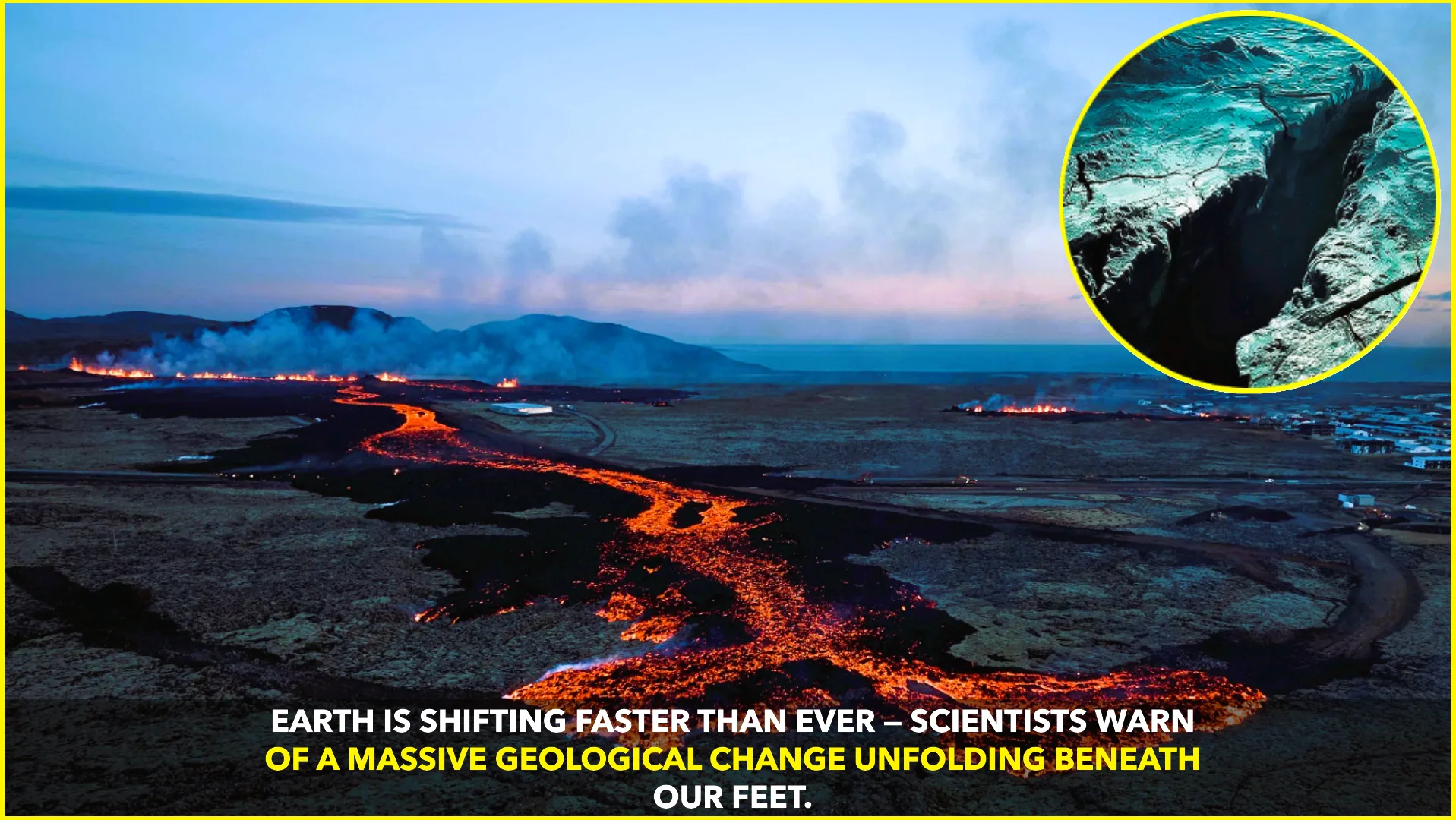The ground beneath our feet is moving — not in the usual, slow geological sense, but in ways that scientists say are faster and more unpredictable than anything recorded in modern history. Deep inside the planet, enormous shifts are taking place, hinting that Earth’s internal engine may be entering a new phase of transformation.
Mysterious Movements Deep Within the Core
A recent Nature study revealed signs of unexpected motion near the Earth’s core, where gravitational data suggests dense materials are moving differently than before. Researchers detected subtle but accelerating changes, indicating that the boundary between the inner and outer core might be behaving in unusual ways (Nature).
This has sparked widespread debate among geophysicists. Traditionally, the core was believed to spin at a constant rate relative to the surface. However, new findings suggest that this rotation may have slowed, reversed, or fluctuated — a sign that internal dynamics are shifting more rapidly than scientists expected.
Climate Change Adds to the Pressure
Above the core, changes in the planet’s mass are also being recorded due to global warming. According to a NASA-funded study, melting glaciers, shrinking ice sheets, and groundwater depletion have redistributed Earth’s mass so dramatically that they’re influencing its very rotation and tilt (NASA Jet Propulsion Laboratory).
Between 1900 and 2018, Earth’s axis drifted more than 4 meters due to water movement alone. This means that climate change isn’t just affecting our atmosphere and oceans — it’s literally changing the shape and spin of the planet itself.
The Fastest Rotational Shift in History
Adding another layer of intrigue, scientists have recorded Earth’s fastest rotation rate in decades. Timekeeping agencies are now considering implementing a negative leap second to adjust global clocks — effectively subtracting a second from world time because the planet is spinning slightly faster than expected (Associated Press).
This acceleration may sound small, but it has real consequences. Navigation systems, satellites, and data centers all rely on ultra-precise timing. Even a one-second deviation could cause glitches in banking systems or communication networks.
India’s Perspective: Why It Matters Locally
For a country like India, where millions live in seismically active regions and coastal belts, these global shifts could have far-reaching effects. Scientists warn that a redistribution of mass could subtly alter ocean tides, sea levels, and even the stress on tectonic plates that run beneath South Asia.
As a result, seismologists are urging India to expand its deep-Earth monitoring network, enhance data-sharing between space and geological agencies, and prepare for long-term implications — not just earthquakes or volcanoes, but the slower, invisible shifts that build over time.
What Experts Say
Dr. Jessica Irving, a geophysicist at the University of Bristol, explained that such internal shifts “are the heartbeat of the planet.” If Earth’s core and mantle move out of sync, she said, it could influence everything from magnetic field strength to tectonic activity. “We’re witnessing Earth breathe in geologic time — but this time, the rhythm is faster,” she added.
The Bigger Picture
While there’s no need for panic, experts agree that humanity must start paying more attention to how interconnected Earth’s systems are. Changes deep inside the planet may not cause immediate disasters, but they could gradually reshape the conditions on which life depends — from navigation to weather to geological stability.
These deep movements remind us that the planet is alive — a constantly evolving system that responds to pressure, heat, and human influence.
Preparing for the Unseen
To stay ready for what’s coming, scientists emphasize three key steps:
- Boost global geological monitoring: Improve real-time seismic and gravitational data networks.
- Integrate new findings into urban planning: Build infrastructure that can withstand unexpected shifts.
- Increase public awareness: Understanding how Earth’s systems interact helps societies respond wisely to long-term change.
Earth has always been in motion, but never before have we measured its heartbeat with such precision — or realized how fast it’s accelerating. From the deep core to melting glaciers, the message is clear: our planet is changing beneath us.
The question now isn’t if — it’s how prepared we are for what’s next.










